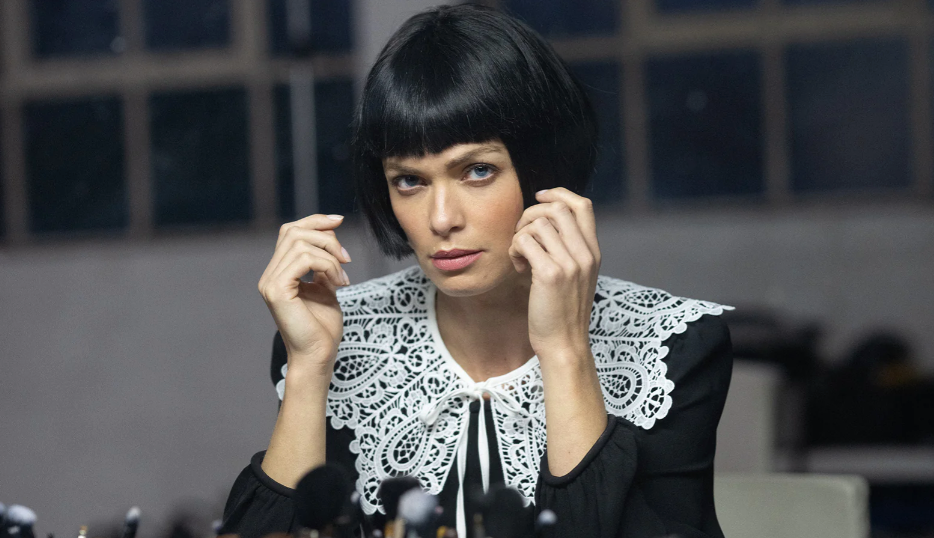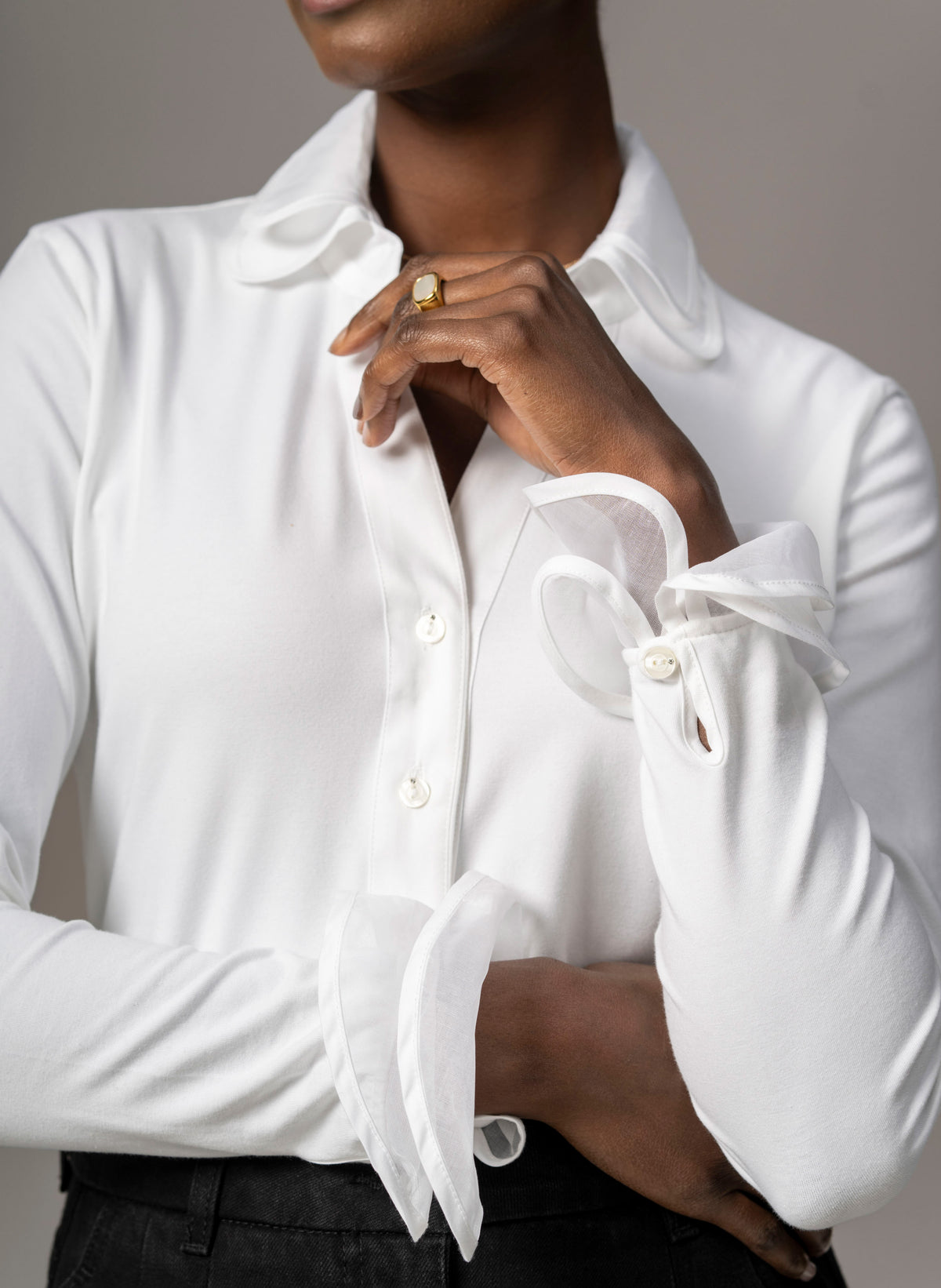The Surprisingly Feminist History of the Shirt Collar

Some things we wear are so interwoven with the fabric of life that we never give them a second thought. The collars on our shirts are one of those things, but behind them there is a fascinating history worth exploring.
Originally an undergarment worn exclusively by men, the shirt has been evolving into a unisex outer garment since the 1860s, but the collar has been a symbol of status and expression for a much wider span of history.

Image credit: Fashion History Timeline
Since the mid 16th century, the collar or ruff was attached to a chemise or smock (for women) or a shirt (for men) as a “a detachable pleated collar in linen and/or lace starched into shape and sometimes supported underneath.”
With whimsical names such as “falling band”, “rebato” and “medici collar,” the high-maintenance starching and sheer impracticality of these garments made collars or ruffs a signifier of wealth and high status.

Image credit: Wikicommons
While wearing something akin to a stretched out accordion around the neck is far removed from our modern fashion sensibilities, this visually arresting historical curiosity is the foundation stone from which modern shirt collars were built.
People in the 16th century weren’t famed for their cleanliness, favouring wiping the body with dry white linen cloths as opposed to sullying it with suspicious, damp water, so it’s unsurprising that collars and ruffs were detachable, so they could be cleaned and maintained separately to save washing the whole garment.
As the 19th century rolled around, recognisable shirts (or blouses) being worn by both men and women, collars were a lot more modest… and attached. So while women might have been emancipated enough to be able to wear more practical clothing, they were also still the people washing them.

Image credit: Refashioning the Renaissance
In the 18th and 19th centuries when washing household garments was a washboard beating, knuckle-bleeding labour which took up an entire day for women (traditionally a Monday), maintaining a white shirt was no mean feat.
Enter Hannah Montague, a pioneering woman living in Troy, New York in the mid 19th century. Presumably fed up of scrubbing her husband's shirts, Montague noticed that the most visible part of the shirt, the collar, was also the filthiest. The solution? To snip off the collar to give it a good wash and then reattach it with buttons. Genius!

Image credit: Buckleigh of London
A local businessman named Reverend Ebenezer Brown commercialised this idea and paid local women to sew detachable collars to be sold in his shop. This labour-saving concept was so wildly popular that Troy became known as “Collar City,” making 90% of the collars in America and forming the backbone of the local economy.
Although detachable collars had almost totally faded out by the ‘30s, when people were enjoying the comforts of “dressing soft” and breaking free from starched rigidity, they deserve a comeback.

Image credit: The Shirt Company
With the power to transform a shirt, detachable collars can give your wardrobe more bang for your buck while also promoting sustainability. One well-fitting, good quality shirt and a selection of collars creates a multitude of looks with less fabric and also reduces water waste (and labour) by cutting down on washing.
Not only that, but detachable collars still hold a certain kind of feminine sophistication and elevation. Perhaps best demonstrated by the late supreme court icon, Ruth Bader Ginsberg, who noted that court robes were designed for men with no adaptions available for women. Wanting to highlight that women can reach seats of power nobody envisaged them ever being in when court robes were designed, RBG strived to be visible. By adapting the robes with a detachable lace collar, the message was conveyed loud and clear that you can be feminine, stylish and powerful. In court photographs, this bold style choice means Bader Ginsberg stands out in the sea of black robes, being seen as a woman and allowing women to be seen in court.

Image credit: Wikipedia
From a labour-saving device which reduced women’s time scrubbing their husband’s workwear to a way to stand out as a powerful, modern woman, the detachable shirt collar is one of the many tiny touchstones on the path to women’s liberation, hidden in plain sight.











